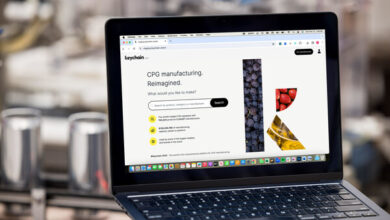Why Vacuum Casting is Perfect for Low-volume Plastic Prototype Production?

Creating product prototypes is a crucial step in any design or manufacturing process. Vacuum casting is commonly used to make plastic prototypes, especially for small runs.
This article will explore why vacuum casting silicone mold techniques are ideal for product designers, manufacturing startups, and engineers. We’ll uncover how this method saves time and costs and offers versatility and high-quality results. Ready to explore the world of vacuum casting? Let’s get started!
Understanding Vacuum Casting
Vacuum casting is a sophisticated yet accessible process that fills the gap between rapid prototyping and full-scale production. But what exactly is vacuum casting? Essentially, it’s a technique used to replicate parts by casting materials under a vacuum, usually with silicone molds.
The process begins with creating a master model, often made from SLA 3D printing or CNC machining. This model is then encased in silicone to form a mold. Once the mold is cured and split open, it can produce multiple copies of the original design.
The vacuum ensures no air bubbles, resulting in precise and detailed replicas.
Vacuum casting is popular across various industries—from automotive to consumer electronics—because it allows for rapid prototyping without the hefty costs associated with traditional manufacturing methods. It’s a go-to solution for engineers and designers who require testing and iterating designs quickly.
Material Versatility in Vacuum Casting
One of the standout features of vacuum casting is its material versatility. With a wide range of polyurethane(PU) resins available, this method can mimic many production-grade plastics. This means you can create prototypes that not only look like the final product but perform alike as well.
Whether you require a rigid, durable part or a flexible, rubber-like component, vacuum casting can accommodate your needs. The material’s flexibility also extends to finishes and colors, enabling designers to experiment and refine their products before committing to mass production.
Importantly, this versatility doesn’t come at the expense of quality. Vacuum casting can achieve precise mechanical properties and finishes, making it invaluable for functional testing and validation. This all-encompassing adaptability is why many plastic prototype companies choose vacuum casting for low-volume production.
Speed and Efficiency of Vacuum Casting
In product development, speed can be everything. Vacuum casting excels here, offering rapid mold creation and short lead times. Once the silicone mold is ready, multiple copies can be produced within weeks compared to other methods.
This quick turnaround is particularly beneficial for startups and small businesses, where time and resources are often limited. By speeding up the prototyping phase, companies can bring their products to market faster, gaining a competitive edge.
Furthermore, vacuum casting’s efficiency extends to its flexibility in adjusting designs. If any changes are needed, the process allows for swift modifications, ensuring that the final product aligns perfectly with design specifications.
Cost-Effectiveness of Vacuum Casting
Another significant advantage of vacuum casting is its cost-effectiveness. Traditional manufacturing methods usually require high tooling costs and high MOQ (Minimum Order Quantity), which is not the case for low-volume production. Vacuum casting, however, requires a minimal initial investment, as silicone molds are relatively inexpensive to produce.
This method offers substantial cost savings for small-batch production, making it accessible to startups and smaller companies. It allows for iterative testing and refinement without breaking the bank, ensuring that the final product meets aesthetic and functional requirements.
The ability to produce high-quality prototypes at a fraction of the cost opens up opportunities for innovation and experimentation, empowering businesses to push boundaries without financial strain.
Quality and Detail in Vacuum-cast Prototypes
Quality and detail are crucial for prototyping. Vacuum casting delivers on both fronts, offering high-quality surface finishes and detailed replication. The method ensures consistency across multiple units, which is critical for reliable testing and evaluation.
Via vacuum casting, even complex geometries and intricate details are accurately reproduced. This level of detail is crucial for engineers and designers who need prototypes that closely resemble the final production pieces.
Additionally, vacuum casting allows for thorough functional testing, enabling teams to identify and address potential issues early in development. This meticulous attention to detail ensures that the transition from prototype to production is smooth and successful.
Common Applications of Vacuum Casting
Vacuum casting is utilized in various applications thanks to its adaptability and precision. In the automotive industry, this method creates components for testing and validation, helping manufacturers ensure that parts meet safety and performance standards.
In consumer electronics, vacuum casting aids in the development of housings and enclosures, providing designers with the opportunity to test ergonomics and aesthetics. The method is also used in medical device prototyping, where accuracy and biocompatibility are crucial.
Beyond these sectors, vacuum casting serves the aerospace industry, architecture, and even fashion, demonstrating its versatility and wide-reaching impact.
Conclusion
In summary, vacuum casting is a powerful tool for low-volume plastic prototype production. Its cost-effectiveness, speed, material versatility, and high-quality output make it attractive for product designers, startups, and engineers.
Through vacuum casting, businesses can streamline development processes, reduce costs, and enhance innovation. It’s a strategic choice that offers long-term benefits and opens doors to new possibilities in product design and manufacturing.
Explore the potential of vacuum casting for your next project and experience firsthand the advantages of this innovative technique. Your path to exceptional prototypes starts here.



